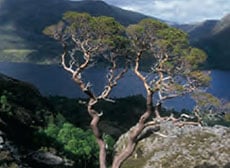
Marine Strategy Framework Directive
This report presents outcomes and conclusions resulting from work undertaken on behalf of the Joint Nature Conservation Committee (JNCC) to examine options and assess approaches to the development of Marine Strategy Framework Directive (MSFD) indicators for the determination of shallow sublittoral rock habitat status in respect of achievement of Good Environmental Status (GES).






